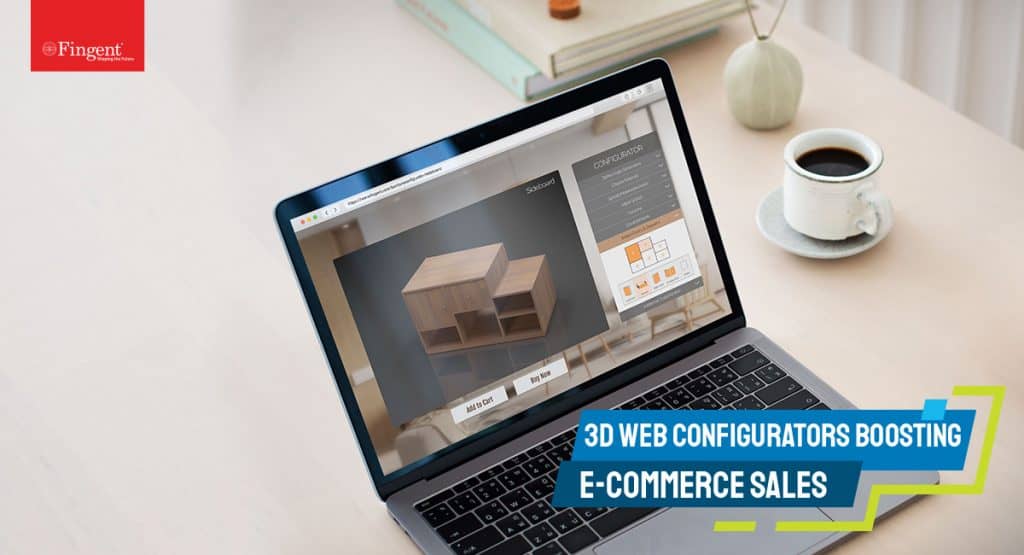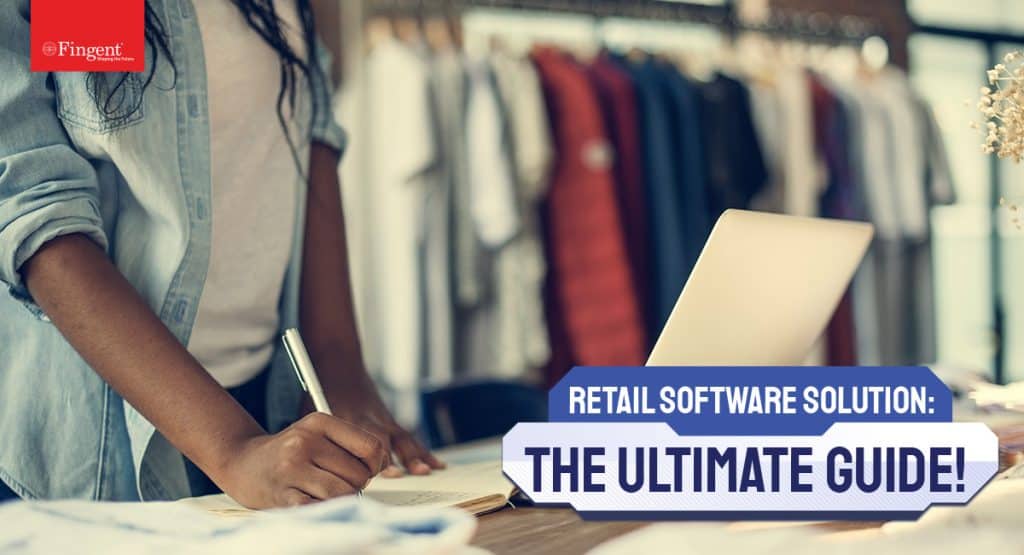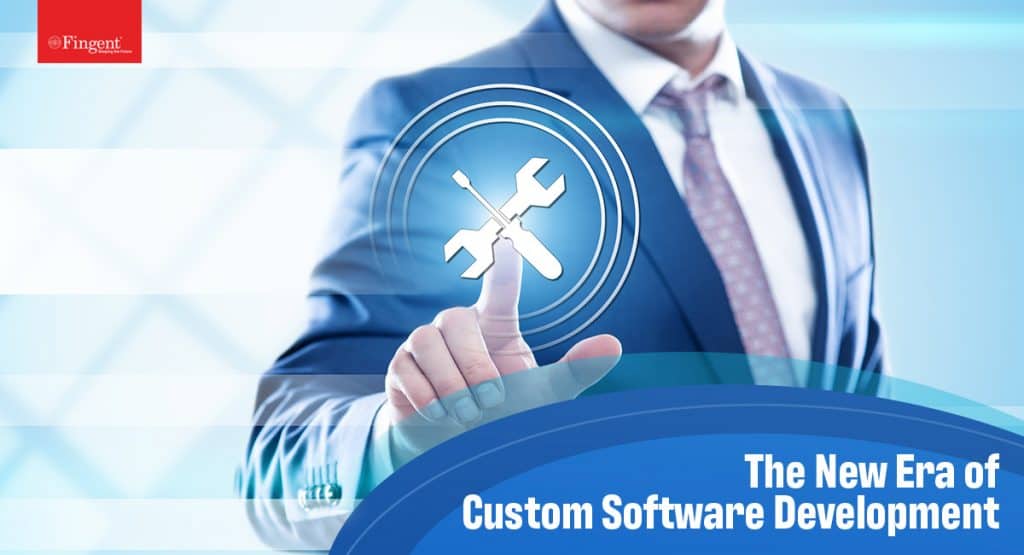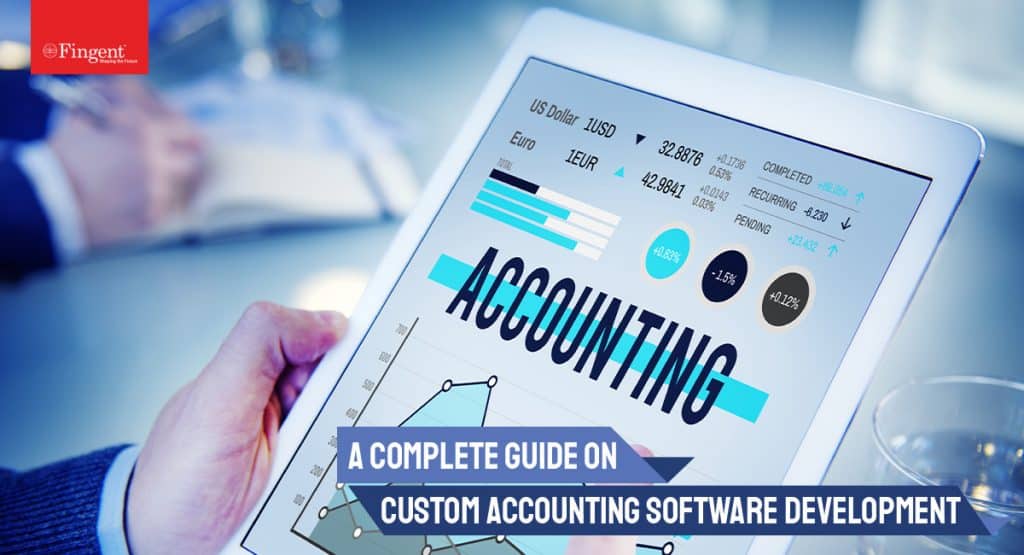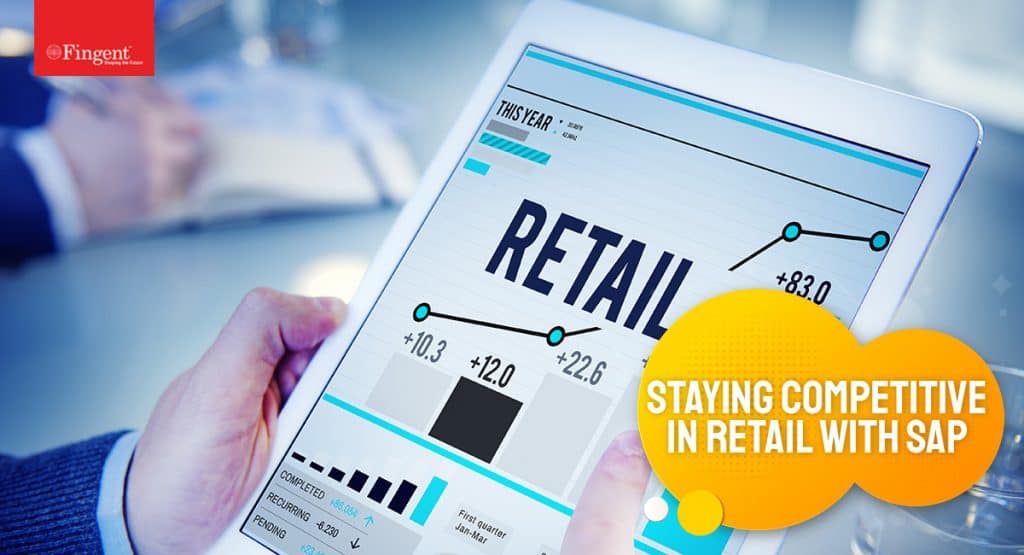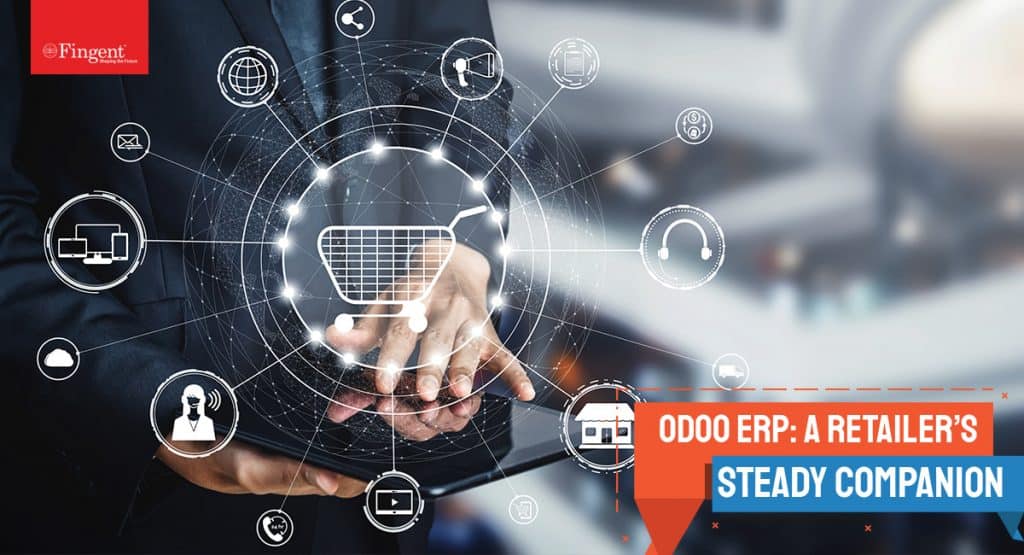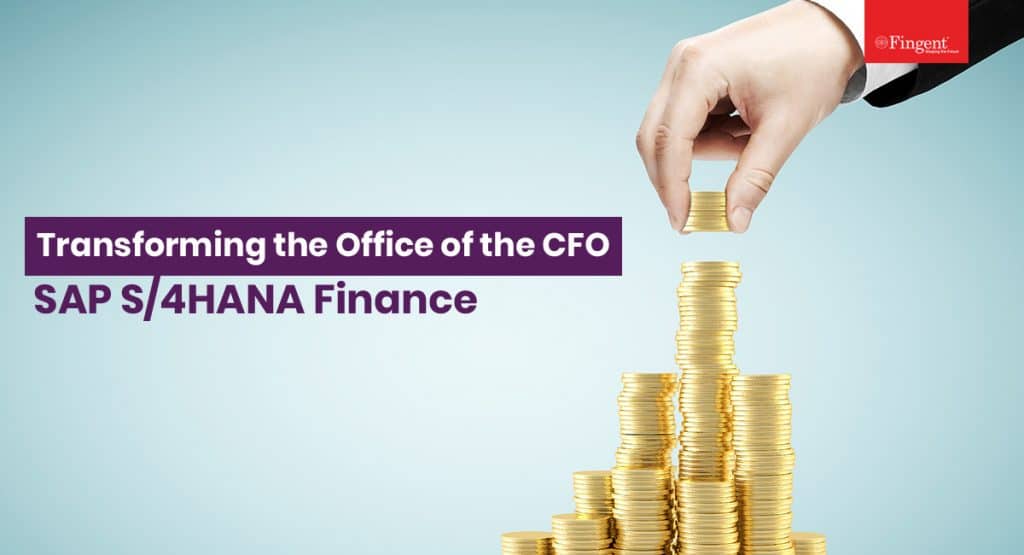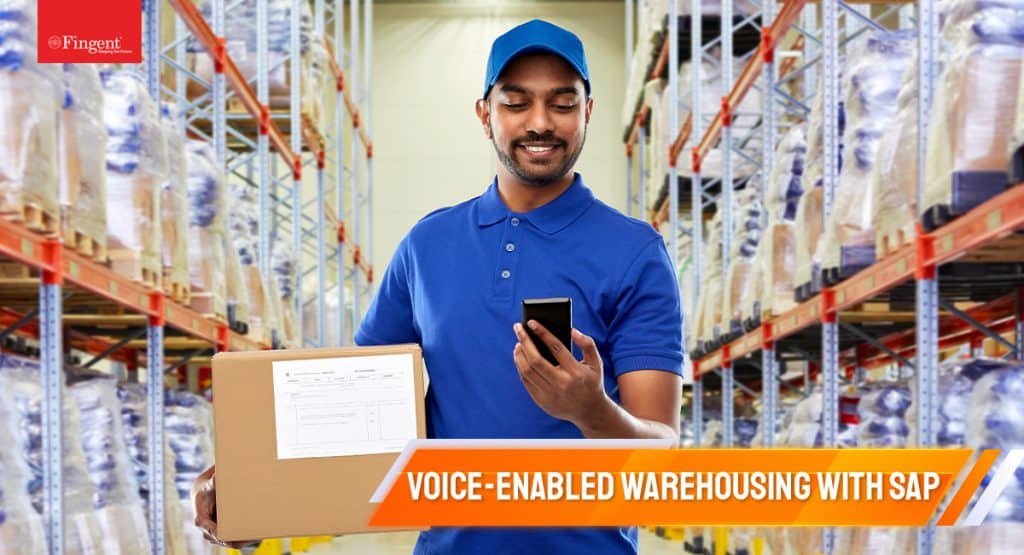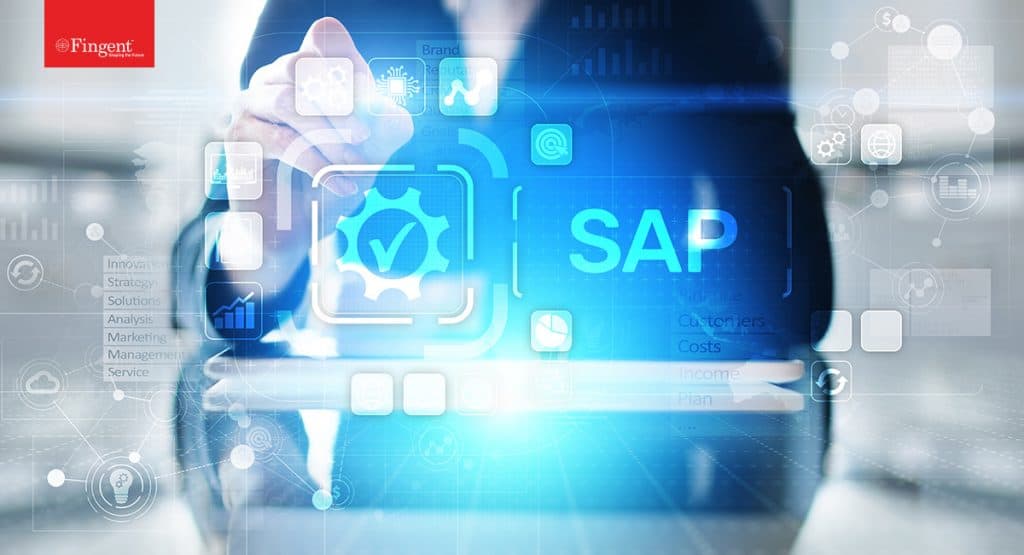Category: Retail
The impact of the pandemic on consumers across the globe has dramatically changed their demands, needs, and behavior. Many of these changes have critical implications for businesses in most sectors. To succeed in the next normal, businesses must respond proactively.
COVID-19 jolted consumer demand in a way that sets it apart from past disruptions. As a result, customer loyalty took a hard hit. Executing the four Ps of marketing (optimization of product, price, place, and promotion) became more complex than ever. Businesses must redouble and broaden their efforts toward meeting ever-changing customer demands and behavior.
As with everything else, it is important for an organization to know and understand its customers. If your company is at crossroads with today’s Ecommerce customers’ needs, this article will help you understand how technology can help satisfy these uprising demands quickly and effectively. So then, let’s first understand how customer behavior, needs, and demands change.
Read more: What are 3D Web Configurators? How do they Boost Ecommerce Sales and Drive Customer Satisfaction?
Ecommerce Customers’ Behavior, Demands, and Needs
Customers are like the moving targets. The key to success is to understand their behavior trends and use technology to help satisfy these uprising needs and demands. Linnworks research pointed to five such trends:
- Convenience is the need of the hour: 76% of consumers feel that convenience is the top priority in choosing a retailer. 90% of shoppers focus on using a trouble-free online store.
- The frictionless shopping experience is most valued: It was noted that 58% of consumers abandoned an online store altogether because they were difficult to use.
- Omnichannel shopping is gaining traction: One in three consumers has purchased an item while on social media. 71% of consumers prefer to complete a purchase on a social site without having to exit to the retailer’s site.
- Consumers demand flexible payment options: Four in five shoppers expect the “buy now, pay later” payment option.
- Delivery convenience: 95% of consumers say that fast and reliable delivery methods play a crucial role in their decision-making.
How Can Technology Help Satisfy these Uprising Needs and Demands of Today’s Consumers?
1. Allow your consumers to experience products before they buy
The biggest roadblock facing Ecommerce businesses has been the inability of consumers to experience products before they buy. Everyone likes to try on clothes they like to buy or see how is their new couch looks in their living room.
This is where AR (Augmented Reality) can help your business. AR can help your consumers try on clothes or closely inspect the components of a mobile device. AR market is expected to reach 2.54 billion by 2023. Online retailers who fail to take full advantage of this technology may likely experience business disruption.
2. Bring your product to life with virtual shopping
Virtual reality shopping can bring your products to life. It helps your customers to have an in-store-like experience, without actually being there. VR technology allows you to tag products so your customers can purchase on the spot. It can instantly connect buyers with customer service executives.
VR can make product recommendations based on customer metrics. It can also cater to both desktop and mobile users. Thus, it provides a better customer experience attracting more customers to your online store.
3. Be omnichannel ready
Todays’ Ecommerce customers like to cross-channel research and purchase. So, they expect smooth interactions across these channels and devices. Technology can help you to provide your customers with what they want, when they want it, and where they want it to. Some of these technologies include video chat, screen sharing, document interaction, e-signature, and more.
Co-browsing is an effective visual engagement system. It can bring your sales executives and customers together on the same page, at the same time. This allows your executive to guide your customers through the complex procedures making their customer journey as smooth as it can be.
Read more: Custom Retail Software Solutions: Everything You Need to Know!
4. Enhance customer communication with chatbots and AI
Artificial Intelligence has a major impact on how we live and work. Voice shopping is expected to jump to $40 billion by 2022, rising from $2 billion today. And 45% of millennials have already been shopping using voice assistants.
Chatbots and AI improve customer experience and boost brand image. These chatbots can be personalized to order food, get recommendations for almost anything, receive details regarding payment or order status, and more.
5. Hassle-free checkout process
Inefficient checkout processes can raise the chances of cart abandonment. However, this problem can be avoided by embracing technology that provides quick and efficient checkout solutions.
Technology enables speedy mobile payment solutions, allows your customers to save card details for repeat purchases. Above all, it proves one-page hassle-free checkouts and offers a range of payment options. All these can alleviate any potential difficulties your customers may face at checkout.
6. Enable m-commerce to enhance Ecommerce
Today many shoppers shop on the go. Hence, mobile platforms have gained greater importance. So much so that m-commerce is emerging as a concept. Given that, providing a mobile-oriented shopping experience will certainly help you win potential customers, maximizing your chances of future success.
Ecommerce mobile apps offer continuous engagement with your brand. It can help them familiarize with new and relevant purchasing opportunities. These apps also allow you to market products relevant to the specific geographical location of your customers.
Read more: 5 Reasons to Integrate Your E-commerce Application with Odoo ERP
How Can Fingent Help Deploy These Evolving Technologies For Ecommerce Businesses?
It is one thing to understand your consumer behavior but another thing entirely to implement technology to satisfy their demands and needs. Fingent is here to help you implement these technologies efficiently. We can help you move the needle and dominate your niche in the Ecommerce industry.
Fingent can help you implement those that make sense and put the rest on the back burner. We can aid in the success of your Ecommerce venture by implementing cutting-edge technologies. Our development experts will help you promote your products in new and innovative ways.
Choosing Fingent can help you save a lot of time and money and avoid unnecessary complexity as we can provide all the needed components. Our platforms are easy to manage yet robust enough to house thousands of products. We can handle unique order processes and payment terms for your Ecommerce sales. Let’s get talking.
Stay up to date on what's new

Featured Blogs
Stay up to date on
what's new



Talk To Our Experts
How Retail Software Solutions Help You Gain A Competitive Advantage
The retail industry has witnessed a tremendous transformation over the past few years. Innovative retail technologies have made the sector fast-paced and highly competitive. The advent of cloud technology has also disrupted the retail industry from the ground up. These technology changes accelerate the need for advanced and bespoke retail software solutions that can effectively automate most routine store operations.
Why should you adopt custom retail software solutions?
Fingent helps you develop custom retail software solutions that help you:
- Automate everyday retail store operations,
- Switch to e-commerce quickly,
- Enhance inventory management,
- Streamline payments and invoices tracking,
- Improve order fulfillment, and
- Serve your customers better and faster.
Read more: Custom Software Development is the Ideal Way to Build Business Apps in 2021
As several countries continue with lockdown measures, the digital shopping trend and the shift in consumer behavior are here to stay. Retailers are forced to address the rising consumer expectations with limited resources like transport restrictions, shortage of labor, out-of-stock scenarios, and so on. Contactless shopping has found a better place in today’s business landscape, and retailers need to adopt personalized retail software solutions to stay relevant and competent in the market.
A few stats that underscore the significance of custom retail software solutions
The following figures suggest why brick-and-mortar stores must adopt retail software solutions and digital transformation to stay ahead of competitors and attract loyal clients.
- 30% of consumers do not wait for more than two minutes to determine if the product they want to buy is in stock.
- 78% of the customers would not use a retailer again after three late or incomplete deliveries.
- 87% of buyers leave the store if the product they are looking for is unavailable and there is no assistant nearby.
Read more: Digital Transformation in Retail: Why it Matters?
Our custom retail software solutions are perfect for companies of different sizes. We help you build and integrate software tailored to your retail business. We create personalized retail software solutions that are scalable and meet the growing needs of a single shop or even a vast retail chain consisting of several Points of Sale (POS).
Benefits of custom retail software solutions
The most significant features and capabilities of retail software solutions include:
- Managing orders, products, and inventory,
- Handling financial transactions,
- Streamlining the supply chain,
- Helping human resources and marketing campaigns, and
- Managing customer relations.
Here are the benefits of custom retail software solutions.
1. Offers real-time visibility
Retail software solutions allow you to control warehouses and shop floors in online mode and identify if certain products are in or out of stock. Also, it helps you send instant alerts if something is out of order and thus avoid lengthy downtimes.
2. Automates in-store processes
Retail software solutions help automate all major store tasks such as billing, price regulation, inventory auditing, reporting, payroll records, returns processing, and more.
3. Improves customer service
As retail software solutions help automate most store processes, your employees can spend more time engaging with the customers and promoting your new products and latest arrivals. Customer reps will have the historical data in hand while attending a customer service call. This helps them save time, effort, and money, reduce returns and refunds, and direct customers to the optimal solution. Embedded analytics in the software allows your marketing team to send personalized recommendations to your customers based on their shopping history and online behavior.
Read more: A Comprehensive Guide on Developing Custom Accounting Software for Business
Different types of retail software solutions
1. Point of Sales (POS) software
The software for shop management, implemented in brick-and-mortar stores, facilitates seamless transactions between customers and the store on the spot. The POS market is projected to grow at an annual rate of 14% from 2016 to 2024. Fingent helps you develop custom Point of Sales software that enables you to manage sales, inventory, and employees with ease. We build custom POS software for your single store or a retail network. It helps boost your customer engagement and revenue.
2. Inventory management software
We help you develop custom inventory management software for tracking, managing, and organizing product sales, material purchases, and other production processes. Typically, the inventory management software works with wireless tracking, barcodes, and radio-frequency identification to support inventory tracking and control.
3. Payment processing software
Payment processing software is a secure program that connects eCommerce sites via virtual terminals to other payment systems that acknowledge credit cards and other online payment methods. Payment processing software allows users to add their card or bank details and notifies financial institutions that approve or reject payments. We help integrate payment processing software into your retail software solutions.
4. Retail ERP systems
Enterprise resource planning (ERP) systems integrate modules for controlling all stages of business. An ERP system is a perfect software for shop management. ERPs are customizable and support integration with third-party systems. ERPs like Odoo and SAP allow developing specific modules to suit your business needs. For instance, SAP FICO (Finance and Cost controlling module in SAP) and SAP Ariba (sourcing, procurement, and financial supply chain solutions).
Read more: How SAP Solutions Allow Retailers to Stay Competitive in 2021
We are an Official Partner of Odoo as well as a Silver Partner of SAP. We are well placed to offer the best ERP consulting, implementation, and maintenance services for your business across these two platforms.
Read more: How Odoo ERP Enhances Retail Operations Management
5. e-Commerce software
The COVID-19 pandemic has increased the adoption of eCommerce among retailers. That said, retail software platforms are a must today. The software enables online store owners to add and remove products, process payments, fulfill orders, etc. Fingent helps leverage numerous eCommerce development frameworks such as Magento, Odoo, etc., to build B2B and B2C e-commerce software for your business.
Read more: 5 Reasons to Integrate Your E-commerce Application with Odoo ERP
You can deploy retail software solutions either in the cloud or on-premise according to your specific requirements:
- On-premise retail software solutions: An on-premise retail application is installed on your local computers or local servers. However, you may need the expertise of an IT specialist like Fingent to maintain the system and handle updates or fix issues.
- Cloud-based retail software solutions: Cloud-based retail software solutions do not require to be installed on your hardware. If you have a stable and reliable internet connection, you can deploy the retail software as a SaaS solution, which is managed by the providers automatically.
Steps to create custom retail software for your business
1. Choose the right vendor
Selecting the right software provider is crucial as well as challenging. Your choice will determine how positively a future system will impact your business performance.
2. Plan and budget
Create a detailed plan and discuss the key features your system should include. Whether to have an omnichannel solution, what function it should perform, what third-party system it needs to be integrated with, and the software development budget must be considered. You can opt for custom software development. At Fingent, we provide you with out-of-the-box retail software solutions within your budget.
3. Development and implementation
Here are a few best practices to take advantage of custom software development:
- Include an internal team of specialists having the needed expertise and experience to participate in the implementation process.
- Provide your team with adequate training to get started and explain the benefits. Your offshore software development partner can help you with this. At Fingent, we help ease your transition to custom software. We offer training and support and provide post-release maintenance and support to our customers.
- Eliminate inactive accounts and other documents that have not been processed for years to simplify the migration.
4. Testing
The retail software system implementation requires continuous control and testing. Thus, most companies rely on continuous testing to ensure the process will happen simultaneously with the integration.
Additionally, you must be prepared to address several issues. The primary purpose of the final testing is to simulate the lifecycle of your business with go-live processes. Fingent has a dedicated Quality Assurance & Testing team that ensures your application is bug-free, high-performing, and responsive.
5. Maintenance
After successfully implementing the custom retail software system, it needs support and maintenance that must be provided either by your technical experts or the software provider. As said above, Fingent offers post-launch maintenance support and change enhancement services for the custom software we develop.
With extensive experience in retail software development and eCommerce systems, we can become your reliable partner and make your company a front-runner in the retail industry.
If you are looking for custom software for shop management or tailored retail software solutions, please drop us a message.
Stay up to date on what's new

Featured Blogs
Stay up to date on
what's new



Talk To Our Experts
Being an Official Partner of Odoo, Fingent has always catered to the needs of various customers and streamlined their operations, thus saving their costs, time, and resources. In this post, you will see how Odoo ERP implementation helps retail management.
Odoo ERP: A Highly Customizable Cloud-based Platform for Retailers!
The retail industry is one of the primary beneficiaries of digital transformation. In 2010, eCommerce accounted for only 5-6% of the aggregate retail sales in the US. The industry has witnessed phenomenal growth over the past decade with the development and adoption of retail technology, ERPs, eCommerce applications, custom retail solutions, and stiff market competition. At present, online retail sales in the US account for 21% of the total retail purchases. Isn’t that mind-blowing?
The paradigm shift from the traditional operating landscape to a digital world presents both opportunities and challenges. Many people look for products online, make buying decisions based on social media reviews, and order products to be delivered home. They even use the internet to search local shops, order online and collect from nearby stores (click & collect) or find retailers that offer discounts in their area. The message is clear: physical/ in-store retailing also needs to pace up with the change.
To overcome the challenges in managing physical and digital selling, retailers need to adopt a modern enterprise resource planning (ERP) system.
Read more: 5 Reasons to Integrate Your E-commerce Application with Odoo ERP
Today, ERP is extensively used to simplify and automate customer relationship management, project management, accounting, compliance, inventory, and supply chain operations. ERP is a reliable investment for business owners as they can control and monitor their operations, get reports, and gain insights on consumer behavior and market situations.
Odoo ERP for Retail Management
ERP software allows integrating the core processes to run a company in one place, such as finance, manufacturing, HR, supply chain, inventory, procurement, tracking, transactions, etc. It also integrates all the data and related business processes of an organization.
Odoo ERP is a popular, open-source, cloud-based business management software that helps manage various business needs such as manufacturing, finance, inventory, point of sale (POS), eCommerce, purchase, logistics, etc. Odoo is an intelligent ERP system that allows retailers to integrate their whole data and all the processes associated with the retail industry. For retailers, Odoo is a perfect choice that increases profit and enhances productivity as it provides comprehensive solutions that can seamlessly integrate with eCommerce.
Read more: 5 signs which imply that your business needs Odoo ERP
How Odoo ERP Benefits Retail Management
Following are the significant benefits of using Odoo ERP in retail:
1. One-step checkout
In online shopping apps, the checkout stage tends to have several processes spread across different web pages. This can put off some customers who don’t want to spend their time navigating through each. Odoo eliminates these multiple processes by offering a one-step checkout that is fast, convenient, and intuitive. It has the potential to reduce checkout abandonment and thereby increase sales.
2. Craft stunning product pages
For eCommerce websites, high-quality product pages are crucial to gain maximum traction. Long descriptions with dull-looking pages are outdated. Odoo ERP lets you build beautiful and stunning product pages with a simple drag and drop feature. You can also customize your online store’s look, layout, color, and theme with Odoo and make last-minute changes to meet the demands and expectations of your clients. You can also make changes and enhancements at regular intervals to add more features to your store. Make sure that your digital store is mobile responsive to be compatible with the changes and new features.
3. Payment module integration
Having different payment options can enhance the customer experience. With Odoo’s plugins and extensions, retailers can integrate and customize various modules like wallets, cryptocurrencies, credit and debit cards, and UPI. It also supports PayPal, PayUMoney, Buckaroo, Sips, Stripe, Ingenico, Adyen, and Authorize.net.
4. Sales, purchase, and finance management
Odoo offers non-retail and retail companies different sales management processes. Odoo has a Point of Sale (POS) module, which is integrated with the sales and inventory module. This module helps retailers track stock and commodities in real-time. The module also allows for the use of biometric devices to log in and out. It’s compatible with any hardware and doesn’t require installation. What’s more, the POS remains operational even when offline.
Read more: How Odoo ERP Simplifies Sales Management in Your Organization
5. Inventory management
It’s a known fact that inventory management in a volatile and dynamic consumer goods market is an arduous task for many retailers. With several issues such as excess inventory or out-of-stock scenarios, inefficient inventory management processes result in financial loss and lead many retailers to bankruptcy.
Odoo ERP offers inventory management as its integral feature, where it stores details of an organization’s entire inventory, including the individual product details. Odoo enables retail managers to keep track of crucial information such as:
- The present status of the inventory
- Items that will run out of stock
- Shelf life details of each product
- Notifications related to product expiry
- Ability to make demand forecasts based on past trends and customers’ online behavior and buying habits
Odoo ERP enables retailers to gain a competitive edge by modifying inventory to meet the fluctuating customer demands.
Read more: Fingent’s new plugin facilitates the scheduling of Zoom meetings from Odoo!
6. Manufacturing and production
Retailers who are also engaged in manufacturing and production can use Odoo’s module to help run functions. The Manufacturing module can assist in creating bills of materials (BoMs), managing semi-finished products, subcontracting manufacturing, etc. It can also help in configuring work centers and managing and configuring kits.
7. The Cloud Advantage
- Odoo solutions are cloud-based, allowing retailers to access their e-commerce stores from anywhere in the world.
- Odoo is flexible, customizable, and scalable, making it especially ideal for small and medium-sized enterprises (SMEs).
- Odoo is an affordable ERP solution with the maintenance fees included in the license fee.
In a nutshell, Odoo ERP serves as a high-performance retail management system where retailers can manage everything on a single system. It can bring tremendous benefits to the retailing industry. They can integrate Odoo’s various business apps such as Sales, Accounting, Customer relationship management (CRM), Inventory, etc., with Odoo e-commerce.
The Odoo App Store features nearly 10,000 apps that connect to the same database on Odoo’s own servers. A testament to Odoo’s popularity is in the numbers: it has more than 5 million users worldwide, from start-ups to large enterprises.
With a simple checkout process, robust customer portal (order tracking, advanced shipping rules, and return management), order review, and wish lists, Odoo ERP provides real-time information to users.
Read more: Why Choose Fingent as Your Odoo ERP Partner
Fingent has an ace team of Odoo developers that offers consulting, development, and implementation services. Whether you want to integrate Odoo ERP with your existing e-commerce store or build an online store from scratch powered by Odoo integration, give us a call right away.
Stay up to date on what's new

Featured Blogs
Stay up to date on
what's new



Talk To Our Experts
The COVID-19 pandemic has hit retailers hard. Overnight, malls, boutiques, and shops teeming with customers were evacuated. As the days dragged by and shutters remained close, many retailers had to let go of employees and even shut their shops permanently. We will see how, but this blog aims to show that this does not need to be the case for your retail business. You can still stay afloat, beat the competition, and rise to success with a little help from SAP!
Changing market conditions show no mercy on retailers
With the pandemic raising its ugly head, 2020 seemed to paint a dismal picture for the future of retail. Major retailers have been canceling orders and delaying payments to their suppliers. This forced some brands to store their seasonal articles or move them into distribution centers or outlets. For some retailers, the coronavirus pandemic increased the risk of bankruptcy due to store closures, while others barely made it through.
For example, Rubana Huq, the president of BGMEA (Bangladesh Garment Manufacturers and Exporters Association), told the press that 3.18 billion orders were suspended. This had an impact on more than half of the 4 million garment workers in Bangladesh.
At the other end, brick-and-mortar presence is seeing a shift to the online commerce environment, which picked up at an exponential pace. E-commerce proved to be a pivotal moment for retailers, making it necessary for them to invest in digital capabilities. A critical aspect of staying competitive in such unprecedented times is the growth of technology and its importance in operational success.
Read more: How Fingent Helps CFOs Gain New Insights and Reliably Enable Key Decisions
Read on to find out how SAP plays a crucial role in turning things around for the retail industry.
SAP enables a differential strategy in the competitive market
More and more companies are recognizing the advantages of implementing SAP solutions. In the current recessionary and competitive market, delaying digital transition may prove a costly misstep that retail businesses will find hard to retrieve. Solutions offered by SAP can help retailers control various aspects of their business and identify trends in customer behavior and capitalize on opportunities at the right time.
With ever-changing customer behavior, SAP equips retailers to become customer-centric. It can help retailers analyze buying behavior by providing much-needed consumer insights. These insights will help them offer more personalized and delightful buying choices that attract customers and retain them.
Here is how SAP equips retailers:
- Provides real-time behavioral information, both online and in-store
- Reduces cycle time
- Helps retailers identify newer ways to find leads and build loyalty
- Streamlines operational process
Also, SAP solutions can help retailers offer a real-time personalized buying experience as it influences buyers’ behavior at the point of purchase. To create such a customized offering, retailers will need insight into buyers’ purchase history, profile, and shopping behavior. That’s where SAP solutions come to your rescue. SAP can provide retailers with all the information required to help them stay competitive.
SAP solutions help deal marketing and merchandise challenges
The retail industry can be volatile, especially during times like these. Retailers who manage seasonal merchandise might find it challenging to maintain multiple products and keep track of all that product data. Any incorrect data can prove costly for the organization. Such inaccurate data can also lead to a mismatch of data across all sales channels, presenting inconsistent product pricing and customers’ eventual loss.
Thankfully, SAP is the backbone for merchandise management, nullifying all these challenges. It comes with a simplified data model that offers end-to-end support for all retail functions. This concept works across the product lifecycle, from master data creation to stock management. It allows retailers to create and maintain the data effortlessly while ensuring pricing consistency across all the channels. These features can increase the organizations’ revenue, minimize data errors, enhance time to market, facilitate a better customer experience, and increase conversions.
Here is an example of how SAP solution helps:
Fewer markdowns: Retailers such as consumer electronics and fashion deal with seasonal goods. To stay competitive, retailers must ensure that these products are available in good time. SAP solutions offer more efficient season management and optimized ordering.
SAP solutions can help manage challenges in the supply chain
Inaccurate data can create challenges in planning, leading to longer response times and increasing the risk of losing the consumer to competitors. Fortunately, SAP solutions come with a single platform for all warehouse and transportation management. Features such as real-time analytics and advanced shipping capabilities can eliminate inventory challenges and enable live inventory management.
Thus, the supply chain process becomes agile and leads to higher revenue. It can also reduce the operating cost of the warehouse. By simplifying and automating processes, SAP can redefine retail and bring value to any retail business.
Read more: How SAP Helps Realize Voice-enabled Warehouse Operations
Following examples prove SAP helps with supply chain:
1. Fewer stock-outs
Supply chains are typically complex and need high levels of agility. SAP solution enables retailers to track procurement journeys automatically that helps reduce revenue loss due to the late arrival of seasonal goods.
2. Lower inventory costs
SAP can harmonize stock information and keep it up to date. At any given point, a retailer can intervene centrally and place a repeat order when necessary. This reduces inventory carrying costs and enables better inventory management which increases revenue.
3. Create seamless customer experiences
Retailers realize the significance of adopting sensor technology to create seamless and highly personalized business processes across all channels. SAP simplifies logistics and digital channel processes from order to payment, both in-store and online.
Key solutions from SAP for retailers
Here are some key solutions that SAP has made available, which can help your retail business:
1. SAP S/4HANA Retail solution for merchandise management
With the SAP S/4HANA retail solution for merchandise management, you can perform necessary checks on inventory, offers, availability across stores, and more in a single, unified view. It is instrumental in engaging your customers with cross-channel interactions.
Read more: SAP S/4HANA: Redefining End-To-End Solution
2. SAP Commerce Cloud
Through the SAP Commerce Cloud, retailers gain the ability to “launch new digital experiences with headless e-commerce capabilities.” SAP Commerce Cloud empowers your retail business with Web apps, chatbots, messengers, and other capabilities to enhance your customers’ digital experience, engagement, and conversions.
Read more: Why is SAP Commerce Cloud A Complete Digital Business Solution
3. SAP Ariba Strategic Sourcing
The SAP Ariba Strategic Sourcing Suite is “a single, closed-loop, source-to-contract solution bundle for managing sourcing and suppliers across all spend categories.” It helps retailers efficiently manage their direct materials sourcing without going through laborious and faulty manual processes.
Read more: SAP Ariba & SAP IBP Integration to enhance supply chain visibility in manufacturing
4. SAP Extended Warehouse Management
The SAP Extended Warehouse Management system is a brilliant solution to managing high-volume warehouse operations. It gives you complete visibility of your supply chain logistics, warehouse operations, and distribution process, giving you seamless control and maximizing the use of your resources.
5. SAP Business One for Retail
SAP Business One for Retail is a comprehensive digital solution that enables retailers to manage all their retail operations, including Point of Sale (POS) insights. It helps retailers with better inventory control, a streamlined ordering process, and seamless multi-channel e-commerce.
Read more: SAP Business One vs. SAP Business ByDesign: Helping Businesses Pick the Best
Empower your retail business with SAP
An industry capable of adapting to new and evolving trends will rapidly recover from the pandemic’s effect. SAP solutions can help retailers examine those trends in great detail. SAP is a powerful tool that allows you to gather all the essential data needed to improve your business. Powered by insights gathered with the help of SAP solutions, retailers can redefine loyalty programs and stay competitive in the current market space.
Fingent offers custom implementation and migration services to SAP and can help you move quickly and make the best use of this technology NOW when you need it the most. Leveraging SAP solutions with a Silver Partner of SAP will give your retail business an added advantage. Drop us a message, and let’s get you started.
Stay up to date on what's new

Featured Blogs
Stay up to date on
what's new



Talk To Our Experts
Why Does the Retail Industry Need to Embrace Digital Transformation?
The term digital transformation in the retail industry means disruption, new services, and improved functioning of the existing system using technology.
As the customer journey is evolving, retailers have to adapt and evolve as well. Also, with the shift towards personalized shopping, retailers have to go beyond focusing on a single technology in order to create new and innovative business models.
Location-based services, mobile apps, and big data analytics have brought about a significant change in the retail industry. This post details the significance of Digital Transformation in Retail.
What does digital transformation mean for retail?
Retailers will have to look beyond marginal enhancements and redefine processes to create a connected engagement using technology. Digital transformation is not only about agility, innovation, data intelligence, customer centricity, and new value propositions but also about streamlining processes, reducing costs, and improving productivity across the transactional cycle.
Now, more than ever before, retailers have to rethink every aspect of their business. Right from sourcing, pricing, inventory planning, employee training to customer experience management, retailers have to find new ways to drive revenues and create innovative business models.
McKinsey states that COVID-19 has accelerated the adoption of digital technologies in the retail industry. According to their report, e-commerce penetration in the United States which was supposed to reach 24% by 2024 has rapidly grown from 17% to 33% in just two months since the lockdown.
“Contactless retail that leverages digital transformation technologies such as Artificial Intelligence (AI), Internet of Things (IoT) and Virtual Reality (VR) increases customers’ confidence to shop during the COVID-19 pandemic”, says GlobalData. With changes in consumer behavior and consumption patterns, retail digital transformation trends are only likely to continue in the future.
Read more: Contactless services: The New Normal in Retail
Simply put, digital transformation in retail can improve customer retention and satisfaction by offering products and services according to their needs.
What are the benefits of digital transformation in the retail industry?
While digital transformation is not an easy one, a well-thought strategy can bring in the desired results. Also, it comes with several advantages such as:
1. Improved operations
Using cloud technologies helps improve operations within the company and enable the retail staff to respond to customers quickly which eventually improves client support. Availability of real-time data helps predict demands ahead of time and stock goods in advance.
2. Convenience
AI tools are helping customers to shop without a cashier and enabling retailers to sell their products in physical stores as well as websites and mobile apps. Thus, AI-powered automation of retail processes such as locating items, tracking inventory and replenishing stocks, remembering customer preferences, etc. will enhance the customer experience.
Read more: AI To Solve Today’s Retail Profit Problems
3. Better communication
Retailers can form a better connection and improve their communication with their customers via social media, mobile apps, websites, chatbots, etc.
4. Enhanced customer experience
Digital transformation influences customer experiences and makes them better. Technical tools help increase the productivity of the employees and make services more efficient. This helps customers get not just high-quality services but also ensures a pleasant buying journey. While digital transformation is customer-centered, it also helps your business become better and stay ahead of the competition.
Read more: Re-Imagining Customer Experience in Retail Industry
5. Boost revenue
Digital transformation offers retailers a chance to reach a wider target audience and thus increase their channels of income.
Why is the retail digital transformation more relevant now?
While the shift towards e-commerce is not new, the COVID-19 pandemic has only accelerated it. In the United States alone, approximately $600 billion represented online sales that accounted for 56% of overall retail growth in 2019.
Here are some more reasons why businesses have to mandate digital transformation and tweak their customer journey to respond effectively.
1. Life post-COVID will see a surge in online shopping
With increased emphasis on social distancing and personal safety, there will be several changes in consumer demands, saving patterns, spending style, and buying channels. Business leaders must plan their digital transformation and make profits in the post-COVID era. Business recovery and sustenance will depend on digital channels during the social distancing phase. Businesses should consider establishing digital channels and improving presence, invest in data, and improve models for customer demands. Additionally, business leaders can integrate pandemic outbreak models with supply chain demands and empower employees to work from home efficiently.
2. Transparency in supply chain
The pandemic has affected the supply networks across the globe and has caused many retailers to be unable to meet consumer demand for their products. So, retailers will have to be more transparent about their inventory and plan their online and offline customer experience.
3. Retailers with a digital presence will be more successful
Given the current pandemic situation, most people are indoors and spending only on essential items. So, retailers having a digital presence are already ahead of the competition. Such retailers are taking advantage of the pandemic situation and capturing the market share through innovation and customer acquisition. Businesses need to continue with their digital transformation program instead of closing their business and filing for bankruptcy.
4. Customers are rooting for their favorite brand
Most people are affected by social distancing, maintaining personal hygiene, queuing up for entry in stores, and other restrictions. So, customers are rooting for their favorite brands and expecting them to provide better services while taking safety measures. This increases the demand for digital transformation of retail more than ever.
Top 3 retail digital transformation trends to embrace
Retail digital transformation has already started and many companies have benefited from it. However, digital transformation is not a short-term process as technologies keep evolving and retailers will have to keep track of the latest trends. We have shared some of the latest trends to watch out for.
1. Augmented Reality (AR)
AR technologies and tools are helping customers to try and view things from the comfort of their homes. For instance, Toyota’s Augmented Reality shopping experience allows you to try 10 different cars before selecting the right one.
Another great example is IKEA. They let their customers choose furniture using their app. Customers just have to point the camera to the right place at home and the app will suggest options that suit your decor.
2. Mobile applications
Mobile apps help you connect with customers in a better way. It allows customers to check on the products, read reviews, etc. Additionally, customers can contact the support team in case of any issues.
Mobile apps are also good for further development as they allow you to add new features and enhance the services you provide.
Read more: 3 Must-Have Retail Mobile App Features to Boost Your Business
3. Virtual Reality (VR)
Virtual Reality technology has immense potential to develop and grow in the retail industry. VR can enhance customer experience and take it to the next level as it will allow customers to check homes, cars, etc., without even stepping inside. The retail giant Walmart employs VR headsets in over 4,500 of its stores for managing grand shopping events like Black Friday. VR training has boosted the confidence and productivity of Walmart’s associates and has increased their rate of retention.
Summing up
It can be said that simply having a retail store will not help you anymore. You must integrate digital transformation from your physical store to your online store and social media accounts.
Instead of spending days researching your options, we can help you save your time and money. Let us know about your retail business needs and we’ll come up with the best digital transformation strategies suited for you. Contact us today.
Stay up to date on what's new

Featured Blogs
Stay up to date on
what's new



Talk To Our Experts
How is AI Transforming Various Industry Sectors?
From Siri to self-driving cars, Artificial Intelligence has been breaking into new realms, including industries that are late to adopt technology or that heavily rely on manual labor. Gartner predicts that by 2020, AI will produce more jobs than it displaces. By 2022, one in five workers engaged in mostly non-routine tasks will rely on AI to do a job.
The future of AI only looks bright!
According to experts, AI and the future of work will amplify human efficiency and productivity. AI may match or even surpass human intelligence and capabilities on tasks related to pattern recognition, complex decision making, sophisticated analytics, language translation, reasoning and learning, and speech recognition.
This article discusses how five major industries are benefiting from AI and its innovations.
1. Healthcare
No surprises here. AI in healthcare always comes first on the list. From doctors, surgeons, nurses to desk receptionists at clinics, Artificial Intelligence is enabling process automation across the healthcare community and ecosystem.
AI tools enable medical professionals to diagnose symptoms, identify trends, analyze data or information that would predispose a person to a particular disease.
AI-powered bots assist surgeons with heart, thoracic, and colorectal surgeries. Using bots for surgeries helps lower the risk of infection and blood loss, reduce pain, ensure higher accuracy, shorten hospital stays, and expedite recovery. Digitized health records (EHRs) help patients access their information on a shared online health portal.
Along with other technologies, Artificial Intelligence is being widely used in the ongoing fight against the COVID-19 pandemic. Remote patient monitoring using AI-powered medical equipment or devices help doctors maintain a safe distance from the patients, while offering treatment. The massive amounts of data generated every second in the field of medicine can be utilized effectively to continuously train AI systems through which these systems acquire the capabilities to generate insights that can aid medical researchers.
Read more: How Emerging Technology is Transforming the Healthcare Industry?
The future of AI in healthcare could include everything from answering the phone to interpreting radiology images, and designing therapeutic drugs.
2. Manufacturing
AI plays a key role in helping achieve better productivity, efficiency, and visibility across manufacturing operations. AI systems can transform the way organizations run their production lines, enhance human capabilities, garner real-time insights, and facilitate the design and product innovation.
Read more: Digital Transformation in Manufacturing
Following are some of the ways by which AI impacts the manufacturing sector:
- AI systems help monitor every stage of the production cycle and machine learning algorithms can be used to predict the fill rate, thereby optimizing the manufacturing processes and production planning.
- Small, lightweight “cobots” help create safer working environments. Manufacturers can adopt robotics to perform dangerous jobs, thus sparing their employees for crucial tasks, thereby avoiding occupational health hazards. Cobots are considerably less expensive and easy to program than the usual industrial robots. Soon, machine learning algorithms can improve their capabilities and help the cobots take instructions from humans and interact with them in a better way.
Read more: What Are Cobots and How Can They Benefit Industries?
- Predictive maintenance helps companies understand when machines need to be attended and serviced. Using machine learning, predictive maintenance can generate valuable data that helps prevent unplanned downtime. Sensors and advanced analytics in manufacturing equipment allow manufacturers to respond to alerts and resolve machine issues on time.
- Engineers or designers can input design goals and other parameters into generative design software (a program that generates several outputs to meet specific criteria) to explore better designs. Using machine learning, designers can learn from each iteration and understand what works and what does not.
3. Finance
According to a report by Business Insider Intelligence, about 75% of bank respondents with assets worth over $100 billion said that they are using AI technologies compared to the 46% of banks with assets less than $100 billion.
As much as $199 bn is saved for the front office and $217 bn for the middle office. AI technologies in banking can help generate over $250 billion in value. Considering the significant savings opportunities, more and more companies are implementing AI. Simply put, AI helps financial services companies mitigate risk, reduce overheads, and generate more revenue.
4. Education
Thanks to the numerous AI applications, the academic world is becoming more personalized. Today, a student can access study materials easily through computers and smart devices. AI helps automate administrative chores and minimizes the time required to complete complex tasks thereby allowing teachers to spend more time with each student.
Teachers can assess both multiple choice tests as well as written responses easily. Robots are helping create smart content such as video lectures and simulations as well as digitized textbooks that can be customized to the learning requirements. Along with the learning aids, these digitized interfaces help students of all academic ages and grades.
There is also a rising interest towards smart campus initiatives. A smart campus is a physical or digital set-up in which humans and technology- based systems come together to create and deliver automated experiences across higher education institutions.
AI is eliminating the boundaries of learning regardless of the physical locations. Today, students can learn any course from anywhere across the globe, at any time. AI-powered education helps nurture the fundamental IT skills of students and soon, there will be a wide range of highly interactive and personalized courses available online.
5. Retail
The retail and e-commerce industry has huge volumes of customer information, sales forecasting, stock and inventory to be tracked. Artificial Intelligence helps simplify data management to a large extent. For example, while searching for a product on an e-commerce application, AI recommends similar items according to your budget, color preference, purchase history, browsing data, online behavior, etc.
Cart abandonment is a common issue in the e-commerce industry which occurs when a customer adds items to their shopping cart but does not purchase them. With the help of chatbots and predictive analysts, the likelihood of cart abandonment can be reduced. Chatbots can remind your customer of the items left in their cart before they choose to navigate away.
Previously, people had to rely on the FAQ section of the website to get their questions answered. However, this included unchangeable questions and static answers and most customers were not satisfied with the answers. Today, however, it is changing. A chatbot agent can respond to questions using Natural Language Processing or NLP in a much better way and ensure that potential customers don’t abandon your website. Integrating voice search features into e-commerce applications helps offer a seamless digital customer experience.
Read more: How Will Artificial Intelligence Transform The World By 2030
Final Thoughts
Artificial Intelligence and machine learning together are promising to help transform every industry by guiding, organizing, and automating work. AI is definitely here to stay! At Fingent, we have the expertise to help businesses of all sizes including startups as well as established enterprises to gain an edge over competitors.
From suggesting products or providing basic customer service or running software tests, developing apps, and completing extensive problem-solving procedures for industries, we use AI technologies such as machine learning, natural language processing, and business rules that will provide you with optimal results. Get in touch with us to learn more.
Stay up to date on what's new

Featured Blogs
Stay up to date on
what's new



Talk To Our Experts
COVID-19 Gives A Fillip To Innovative Digital Retail Tech & E-Commerce
Containment measures implemented as a result of COVID-19 have created a “hide and seek” situation for the retailers and their customers. Although many believe that this is forcing retail tech to evolve, it is in fact doing much more. It is causing a ‘retail revolution’ and significantly changing the retail tech across categories. This article will discuss how COVID-19 will advance innovation in Retail technology.
Five Essential Retail Technologies
One way in which the COVID-19 pandemic has forced the retail industry to adapt to the “New Normal” is by finding viable ways to ensure business continuity. Home quarantines and mandated store closures around the world have expedited the shift to online shopping, forcing many organizations to adopt e-commerce as their primary shopping channel.
Here are five essential approaches to retail tech across categories in response to the current crisis:
1. Work from home capabilities
With over 210 countries affected by the coronavirus as of May 2020, several countries have encouraged or even enforced work from home (WFH) as the only viable option for business continuity. This requires a shift in work dynamics necessitating companies to become more flexible and open up communication lines across departments and customers. Retail organizations will have to adopt technology enablers and digitize their processes and workflow to bolster WFH capabilities.
2. Integrated inventory management
Paranoia about supply shortage has customers adding multiple items to their cart at various stores, but this does not always lead to a purchase. This has led to uncertain stock demand, which causes fluctuations in the stock condition, making it extremely challenging to regulate and maintain inventory during this crisis.
Retailers thus need to focus all their efforts on preparing for a flexible, streamlined, and digitally backed omnichannel retail strategy with an enterprise-wide centralized inventory management system if they want to stay profitable. With an integrated omnichannel approach, you can deliver a unified experience to your customers across channels by tracking, refreshing, and refilling inventory quickly.
Read More: How a Smart Product Ordering System Helps Retailers and Wholesalers
3. Go digital!
Though the shift to digital in retail has always been in the cards, the pandemic is fast-tracking this move, allowing retailers no room for delays in adopting a digital-first approach.
According to a survey held by YouGov in March 2020, 83% of internet users in Hong Kong and 85% of those in China said they avoided crowded public places. If the outbreak of COVID-19 worsens, 58% of US internet users said that they would avoid shopping centers and malls. If retailers do not prepare for these new purchasing behaviors, they will fall behind other competitors in the market.
Read More: Ways to Leverage Smart IT Solutions for your Retail Business
4. Smart delivery
Delivery is quickly becoming the only option for most retailers. However, there are risks associated with it. While a shopper may be anxious about accepting a parcel in person, a driver or delivery person is also at the significant risk of coming in contact with an infected person, and he in turn might infect other customers. This situation makes it imperative to scale up a contactless delivery program.
Retailers can use apps that allow them to track the driver’s location in real-time and ensure that they are learning the routes and delivering packages to the right locations. It is extremely important to get started on this immediately to stay competitive. Leverage the educational capabilities of an app to help onboard new delivery drivers quickly.
Retailers need to invest in:
- Finding reliable logistics partners
- Automating logistics and supply chains for real-time updates
- Finding innovative ways to meet the customers’ expectations
5. Adopt “self-server” technology
PYMNTS.com reports that the projected value of the mPOS terminals market by 2024 is $55 billion.
Retailers need to focus their resources on implementing better hygiene measures and shelf replenishment than asking the staff to keep their scanners clean. Technological development is now allowing the shopper to scan and pack their items as they shop. This self-serve capability in the form of an app can be downloaded on to the personal devices of the customers. It allows them to shop for essential items and put them into their own bags and pay for them at a special counter before they leave. This results in less interaction with other customers or staff and less waiting time for payment.
Read more: How Important is Technology in Retail: 4 Focus Areas
Advance Innovation in Retail Tech
The COVID-19 pandemic has disrupted the retail sector, altered consumer behavior, and brought in lasting changes to the retail landscape. But success depends on your response to the COVID-19 situation. On the bright side, it has forced many retailers to adopt innovation in retail tech.
According to PYMNTS.com, “one hundred fifty million US consumers are expected to use in-store mobile payments by 2021.” Retailers will adopt contactless technologies such as QR codes, mobile payments, and tap and go, and this revolution is happening as we speak. The time to strike is now. Give us a call and let’s discuss how to get you started.
Stay up to date on what's new

Featured Blogs
Stay up to date on
what's new



Talk To Our Experts
CX Solution to Improve Retail Growth
Nurturing communities and building loyalties is now more critical than ever for all retail brands. With instant access to the latest trends and technologies, customers demand better experiences in their interactions with retail brands across all touchpoints. Hence, Customer experience (CX) has become the most important facet of the retail marketing strategy. Retailers, therefore, have to focus on improving CX through every channel.
Importance of CX solutions
Companies can leverage authentic data and modern technology to transform customer experiences and positively impact their business’ future. While most organizations do have systems in place to track the performances of their CX strategies, few track the end-to-end customer journey. Using appropriate CX solutions, organizations can bridge the gap between expected and actual experiences. CX solutions help companies measure and understand the impact of their CX management strategies.
By employing CX solutions, you can manage the interactions that current and potential customers can have with your brand, thus enabling you to meet or exceed their expectations. CX solutions leverage customer interactions to align the brand image according to the customer’s perceptions. This helps you foster strong and long term customer relationships.
Related Reading: 5 Ways to Enrich Customer Experience at Your Retail Store
Top Trends in CX
Staying abreast of the latest technologies and trends in Customer Experience will help you stay ahead of the competition. It’s time to hone your CX strategies by following these latest trends that rule the CX market.
- Omni-channel CX: Customer journeys have become more dynamic than ever. Based on convenience, customers constantly switch mediums. Since the line between physical and digital channels are blurring, customers expect seamless experiences in their interactions across all channels. It’s important for retailers to strike a proper balance between the “traditional” and “online” business models based on their customers’ preferences. Adopting omnichannel customer care strategies will help resolve complex issues quickly.
- Artificial Intelligence: CX enhancement requires comprehending vast amounts of chaotic and complex data in real-time at high speeds. This scenario is most suitable for AI-powered solutions. Using AI, you can replicate human-like engagements (chatbots for example), track customer-behavior and roll out customized campaigns on their preferred channel of operation. Thus you turn your data into valuable customer insights.
- Hyper personalization: Customers expect high levels of personalization and prefer to buy from brands that offer services/products that are fine-tuned according to their requirements. With a hyper-personalized approach, retailers can identify subtle customer traits and deliver highly targeted and relevant services. To develop this level of hyper-personalization, your data and analytics have to be aligned to paint a clear picture of your customers’ choices.
- AR/VR: Augmented Reality (AR) and Virtual Reality (VR) technologies are touted as the “technologies of the future” since they provide highly immersive and engaging customer experiences. AR and VR provide customers with a hands-on experience which helps them make better choices. Many retailers are already reaping the benefits of implementing these futuristic technologies. For instance, Ikea allows customers to check how the furniture would look in their homes before buying using AR. Famous clothing brand Marks and Spencer uses virtual try-on mirrors to boost their store experiences.
- Virtual assistants and chatbots: Virtual assistants and chatbots enable companies to deliver faster and more efficient services at low costs. Some may argue that chatbots lack empathy and hence cannot replace human customer service representatives. However, you should not overlook the fact that advances in AI have given bots the ability to decipher human emotions. By combining the technologies of a virtual assistant and chatbots, you can provide your customers with personalized and empathetic experiences.
Related Reading: Capitalizing on AI Chatbots Will Redefine Your Business: Here’s How
Future of CX
Customer Experience will continue to be crucial for brands to survive in a disruptive business environment. Retailers need to adopt agile models to retain customers and attract new ones. Going forward, CX will also depend on employee experiences. If your employees are empowered, they will in turn care for your customers. Your interactions, both with your customers as well as your employees across all channels need to be more meaningful and effective.
https://www.fingent.com/insights/portfolio/smart-product-ordering-system/
Gartner states that 64% of consumers give more importance to their experiences with a brand than to the price of a product or service. Fingent helps you implement the latest technological advancements to make your CX strategies fruitful. Contact us to know more.
Stay up to date on what's new

Featured Blogs
Stay up to date on
what's new



Talk To Our Experts
Best Retail Mobile App Features To Enhance Your Customer Experience
Speed, convenience, innovation, and customer experience – these are the elements that drive the retail industry today. With consumers becoming increasingly connected and demanding personalized services, retail brands can no longer sit back and expect a good product to do the trick for them. Newer, smaller and yet better tech-enabled retail players are pushing into the market and giving big brands a run for their money. Technology is thus the biggest competitive advantage in today’s digital age, and retailers are recognizing the importance of mobile app technology to communicate their tech-driven goals. In this blog, we will discuss exactly how retail mobile apps are helping retailers boost their business. We will also discuss 3 must-have features in retail apps.
Related Reading: Although mobile apps are a source for greater business success, it’s vulnerable to hacker attacks. Check out the top 8 security issues incurred in mobile app development.
How A Retail Mobile App Can Help Boost Business
The number of mobile apps available today is a testimony to the popularity of mobile apps across the globe. A report by Statista shows that as of the first quarter of 2019, Android users were able to choose between 2.1 million apps and Apple’s App Store had nearly 1.8 million available apps. The demand for apps keeps increasing every day, which proves that they are the preferred choice of interaction among consumers today.
Convenience is the factor that is tipping the scales in favor of mobile apps. E-commerce and online shopping brought shopping into the homes of customers, but mobile apps go one step further and bring it to their fingertips. Here are a few more reasons how retail mobile apps are helping businesses boost sales.
- Increases Reach
The most important aspect of sales and marketing is to reach customers where they are. That’s where mobile app technology brings the biggest advantage. Here are some statistics to show that mobile devices are the best way to reach customers.
- Up to 70% of web traffic happens on a mobile device.
- U.S. consumers’ time spent on mobile crosses 5 hours a day.
- Customers have 2X more interactions with brands on mobile than anywhere else.
- Mobile app usage for shopping grew by 54% in 2017 and continues to increase.
As these statistics show, mobile apps are where the customer is and that is where retailers must focus.
- Builds Loyalty
Mobile apps allow the customer to interact directly with the company quickly and on their schedule. Push notifications and recommendations on their mobiles keep them connected to your brand at all times. Many mobile apps incorporate loyalty programs and gamification features into their mobile apps. This helps in increasing engagement with customers in the way they prefer it.
It also discourages customers from having to look elsewhere – the more they shop, the more they win and the more loyal they become. Rewarding customers for social sharing and referrals build loyalty to the brand as they feel included in the success of the business.
- Improves Efficiency
Mobile apps do much more than bring your products to consumers. They help in building efficiency along with providing ease of access. When it comes to helping customers, features like integrated shopping carts and payment gateways make the purchasing process much smoother and hassle-free.
From the operations perspective, this helps efficiently record, track and implement invoicing and inventory management. Mobile apps also offer features like employee scheduling, CRM, real-time inventory check-up and other functionalities that help employees better serve the needs of customers.
Contrary to driving business away from brick and mortar stores, mobile apps can impact and support in-store operations as well. With features that can help locate products in the store, Wishlist building, barcode scanners, and faster payment options, mobile apps can provide excellent support in-store as well.
3 Must-Have Features in A Retail Mobile App
Now that we’ve established how important mobile apps are in the retail business, let’s see what will get your app ahead of the competition. For a mobile app to be successful, it must be packed with features that are focused on making the customer’s journey hassle-free and enjoyable. As a start, here are some features that you absolutely must include in your mobile app.
1. Easy to Use Interface
This is one of the most important aspects to concentrate on when building a mobile app. This is the face of your company and the first point of interaction for a mobile app user. Logic dictates that this is where the customer will decide whether he wants to continue his journey with your brand or not. A few key principles to remember here are Simplicity, Ease and Brand Recognition. Do not overload your UX with too much information. Keep it simple. Ensure that the user can navigate through your site easily with simple drop-down menus and clear icons. Ensure that your brand colors, logo and other aspects of your brand image are clearly communicated in your UX.
2. Hassle-Free Purchase Options
Impulse buys are the most important advantage for retailers even when it comes to mobile apps. The best way to capitalize on this is to ensure that the customer is led through the purchase process quickly and without any hiccups. The moment customers face a glitch in the purchase process, the frustration caused could overrule their impulse to buy. The result is abandoned carts and loss of customer loyalty.
To combat this, it is important to offer multiple purchase options. In addition to cash and card on delivery, other options like debit and credit cards, Google Pay, Apple Pay, and PayPal must be included. This will allow the customer to make the purchase the way they prefer. Easy returns options are another way to ensure that the customer doesn’t hesitate to make the purchase. Ensuring that the inventory is up to date is also an important aspect of eliminating buyer frustration and improving customer retention.
3. Personalized Experience
Machine Learning has brought the online shopping experience a long way from what it used to be. Shoppers don’t have to deal with irrelevant spam emails or browsing through thousands of products to find what they want. Apps equipped with machine learning now know exactly what the customer wants when they want it and the best way to give it to them.
Apps are continuously learning customers’ buying preferences and finding ways to personalize the experience for them. Push notifications featuring the items they like and specialized offers for those products will give buyer’s added incentive to purchase from you.
Are you looking forward to building an innovative mobile app to boost your revenue? Get your FREE mobile app specification template here!
Go Custom with Retail Mobile Apps
While we have presented just three must feature to be included in your mobile app, there are many more that may be relevant to your particular brand and customer base. At Fingent, we specialize in custom-built mobile apps to cater to our client’s unique needs. Give us a call and let’s talk.
Read More: Mobile App Development : 4 Tips To Consider
Stay up to date on what's new

Featured Blogs
Stay up to date on
what's new



Talk To Our Experts
How Face Recognition Apps Are Defining The Future Of Competitive Industries?
There has been a lot of talk about Face Recognition Apps recently. It has received accolades for its use in enhancing security as well as flak over privacy concerns. Speculations aside, there is no denying that face recognition software has revolutionized the way we perceive technology. It is no longer a faraway concept as it finds a place in our pockets through mobile technology.
In this blog, we will look at the technology behind face recognition software, what makes it tick and how it has found application across industries.
What Is A Face Recognition App?
Face recognition is a biometric technology that creates a face print of an individual by mapping out his or her facial features mathematically. This face print is stored and used to compare a digital image of a person verifying their identity.
This mapping is done by identifying 80 nodal points on a human face. These nodal points are used to measure different variables of the face. The width of the forehead, the length of the nose, the shape of the eyes – these measurements are captured on a digital image of the person’s face and stored as a face print. Deep learning algorithms are then used to identify a person in comparison with the face print.
This technology has been used in various ways from automatic photo tagging by apps like Facebook for authentication and identification by Apple’s iPhone X. The way in which Apple has used this technology is interesting. Face ID technology, which allows users to unlock their phones using the stored face print, is designed with 3-D modeling. The software compares over 30,000 variables to fine-tune recognition capabilities. This face print or Face ID can be used as authentication for purchases done with Apple Pay and other Apple stores. Amazon Rekognition, Google Cloud Vision API and other image analysis APIs can be now used to add facial recognition capabilities to other applications.
The inclusion of technologies like augmented reality, mixed reality and more have made face recognition software a powerful force. At Fingent, we developed a mixed reality application using Microsoft Hololens. This application helps in the identification of a person and also links the face print to the biodata of the person. It will also be able to capture images and compute similarities between the captured image and all the other images in a secure database.
Read More: The future of communication and security using augmented reality.
The Role of Face Recognition Apps in Safety and Protection
According to a Javelin Strategy and Research study, identity fraud hit a record high with 15.4 million U.S. Victims in 2016 and an increase of 16 percent from previous years. In a connected world where such vulnerabilities exist, face recognition software is proving to be an invaluable asset. The software is helping law enforcement and corporate to put a name to the faces of criminals who have been playing havoc with stolen identities. Some applications of face recognition software in ensuring safety are:
- Identity validation at ATMs and prevention of identity theft with photo IDs.
- Face recognition surveillance systems in schools to protect students from expelled students or parents who have been flagged as dangerous.
- Equipping law enforcement personnel with identification of criminals and contextual data to warn them of dangerous persons before they approach offenders.
- Automated facial recognition (known as AFR) helps in forensic investigations by identifying individuals on surveillance cameras and videos, as well as in recognition of dead/unconscious individuals at crime scenes.
- Protecting retailers from shoplifters by warning security personnel of known criminals with a record. It also helps them avoid potential violence in the store by warning them when dangerous criminals or disgruntled former employees enter.
How Various Industries Can Benefit from Face Recognition Apps
Apart from ensuring safety and prevention of identity theft, face recognition software has many commercial applications as well. Many organizations across industries are recognizing the vast potential of face recognition apps and exploring different ways to capitalize on its features. Let us look at the Healthcare and Retail industries as an example.
Healthcare
Healthcare is constantly making giant strides with technology and facial recognition is contributing in unexpected ways. Researchers from the National Human Genome Research Institute (NHGRI) in the United States have come up with a face recognition system, which can diagnose a rare genetic disease called DiGeorge syndrome. People with this syndrome exhibit particular facial anomalies, which give them characteristic expressions that can be detected by facial recognition software. Despite the many challenges associated with effective detection, the team has developed software with an accuracy of 96.6%.
Another example of face detection software being used in healthcare is the facial recognition app developed by Listerine. This app enables a blind person to detect when somebody is smiling at them, by setting off vibrations when the face recognition app detects a smile. This helps the blind respond better in social situations, thus contributing to their quality of life.
Speaking about the further possibilities that technology can bring to healthcare, Christoffer Nellaker, of the Medical Research Foundation’s Functional Genomics Unit at Oxford says: “A doctor should in the future, anywhere in the world, be able to take a smartphone picture of a patient and run the computer analysis to quickly find out which genetic disorder the person might have”. This is already coming true with the help of face recognition.
Related Reading: Check out how modern healthcare is revolutionizing with automation.
Retail
Retailers have been using augmented reality to improve the customer experience for a while now. The retail giant Sephora has gone one step further and added a live 3D facial recognition feature to its Virtual Artist application. This enables a more accurate facial tracking and rendering, allowing users to virtually try on Sephora’s various products while they are moving in real time. Parham Aarabi, CEO of ModiFace, which is the developer of this function for Sephora says: “We believe the ability to see yourself with products can impact sales online … and thus the integration on Sephora will, based on our expectation, result in increased conversions and user engagement.” The goal with this move is to enable customers to try on their products in a fun and more interactive way. The accuracy enabled by this technology will go a long way in enhancing the customer’s experience and boosting sales.
By using face recognition software in making educated guesses about a potential customer’s gender, age, etc., big retail giants are optimizing their ad campaigns to specific target audiences. Such advertisements are more effective as they help deliver a targeted message that has a powerful effect on consumers. An example is the “Because I’m a Girl” campaign rolled out by children’s charity Plan the UK. The charity created bus billboards, which would scan the viewer’s face and display an ad depending on the viewer’s gender. This was done to highlight the plight of women who are denied rights based on their sex. Brands like Virgin Mobile, Nike and others have also used face recognition software to create a more immersive ad experience for their customers.
Related Reading: Find top ways to leverage smart IT solutions for your retail business.
Implementing Face Recognition Technology
Face recognition software is closer to home than we think, and it is apt to look at ways in which your company can capitalize on its capabilities. Talk to us and let’s discuss how.
Stay up to date on what's new

Featured Blogs
Stay up to date on
what's new



